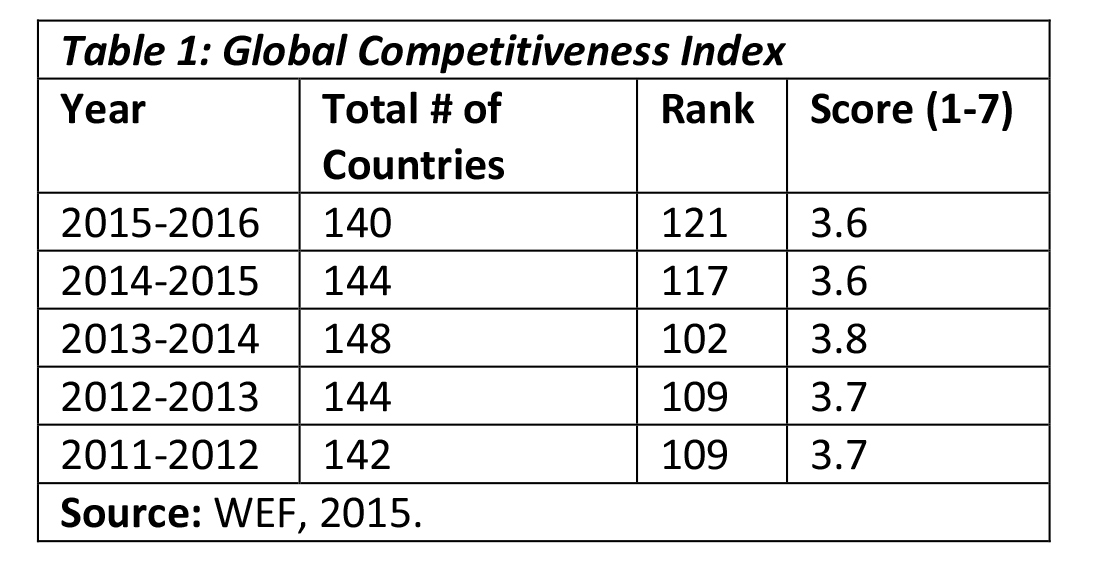Introduction
Following last week’s description of the World Economic Forum’s (WEF), annual Global Competitiveness Index (GCI), today’s column focuses on Guyana’s results. Guyana is one of only three Caricom countries reported on by the WEF. Today’s column is also the last in the series dealing with appropriate measures of Guyana’s economic size, progress, and national/individual well-being/welfare.
The position I have advocated is that, for the foreseeable future, the GDP will remain the premier measure of economic performance. Two alternatives though, have emerged as complementary/supplementary; these are the Human Development Index (HDI) and the GCI. I have already addressed Guyana’s HDI performance, and will not repeat it here.
Theoretical controversy
 Last week I briefly alluded to the theoretical controversies over the notion of national competitiveness, in an economic sense. Some analysts argue that globally, firms compete. Thus when GuySuCo sells sugar overseas, it is competing with other sugar producers. Similarly, industries and/or economic sectors compete globally. Thus when our rum producers, as a group, export their different brands, the rum industry or sector is competing globally with other alcoholic exporters (for example, whisky exporters). Similarly, when our interior-located mines and forests export their products, they are competing globally with other exporting regions. It is only through these means (firm, industry, sector or region) that nations actually compete economically.
Last week I briefly alluded to the theoretical controversies over the notion of national competitiveness, in an economic sense. Some analysts argue that globally, firms compete. Thus when GuySuCo sells sugar overseas, it is competing with other sugar producers. Similarly, industries and/or economic sectors compete globally. Thus when our rum producers, as a group, export their different brands, the rum industry or sector is competing globally with other alcoholic exporters (for example, whisky exporters). Similarly, when our interior-located mines and forests export their products, they are competing globally with other exporting regions. It is only through these means (firm, industry, sector or region) that nations actually compete economically.
In this sense therefore, national economic competitiveness is a misnomer. Indeed these analysts go further and claim that,

